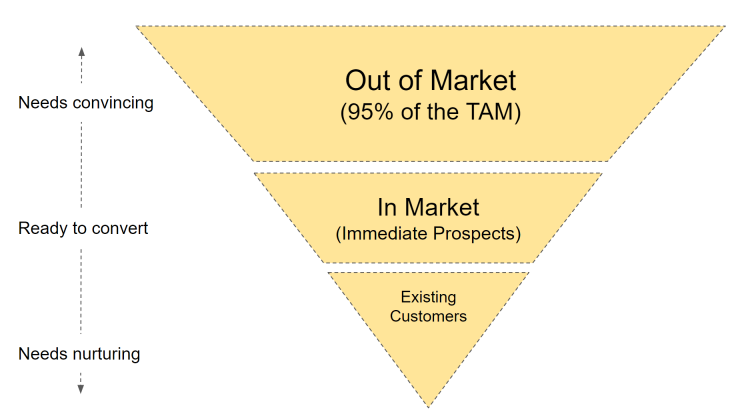Is there such a thing as Brand Response Marketing?
Brand Marketing ,DTC ,General Management ,Past ExperienceMarch 26, 2023
cezanne

Whatever happened to #brand response #marketing? Or the idea that brand marketing actually does drive down funnel productivity, cost efficiencies and conversions? How about the taboo idea that performance marketing can actually create aided recall and awareness? The digitization of all things whether fully or minimally, I would say nowadays, everything is a brand experience, and everything is about performance.

The reality is the funnel hasn’t really changed right? At the very top, you’ve got the consumers that are “out of market” they just don’t know they need you yet for various reasons, this is where 95% of your TAM resides and where brand marketing focuses on.
What about the folks who are ready to buy? Here performance marketing is the active tactic, it’s easy to measure, aligned with sales goals and key business metrics.
Then you have your customers, the fickle to the loyal. These are the folks who are nurtured, hopefully appreciated and intertwined with our product development efforts.
Most of the time, these three tactics are not integrated, mostly siloed or indelibly operating somewhat independently. Is it idealistic to think that a business can balance and quarterback the three segments? I think so and this is where brand performance marketing comes into play for me.
So what is brand performance marketing?
Simply, it’s the idea of integrating brand marketing with performance marketing. I see it as a holistic method to move consumer segments from, being “out of market” to being “in market” and finally bonding with the brand as existing customers. The classic approach has always seen brand, direct response and lifecycle marketing as three distinctly different functional capabilities. However, these old constructs can be susceptible to competitive pressures, are detrimental to achieving a cohesive experience for the consumer segments and of course sustaining the success gained when bad times come about. Disparate focus on the three segments creates a type of tunnel vision, particularly for large brands and a competitive edge for early and stage businesses during a economic downturn. There are ways to overcome this of course through better integration, processes, governance and frameworks. However, this only serves to further separate the business from the consumer.
How can we address these segments? Start with deconstructing your buyer’s journey, nothing elaborate or scientific rather basic, just start at the very top. We have to build an architecture that works to convince consumers to want your product when they’ve been using/considering alternatives, then enabling them to find your product to eventually be converted into a customer. It doesn’t end there, your competitors are persistently “conquesting” your prospects and customers. This means you have to continue to nurture them and adapt your product to address changing expectations.
All three segments (funnel screenshot) care about these four things
- Price – If I had a nickel for every brand that sees “price” as a number barrier, I’d be a gazillionaire. Level setting on price is so crucial, its the hardest thing to figure out. Pricing something too low presents a perception of low quality / cheapness and of course pricing something too high could harm your growth trajectory. A pricing strategy should be a consumer first process, know who they are and build from there, test and learn.
- Value – Does your product deliver the benefits and reasons to dole out the cost to buy your product? I always tell my family, somewhat jokingly, no-one ever pays MSRP for antivirus software. Have you? If you did, I want to know about it because that’s when you value the cost of the product your purchasing. Its no longer a transaction, there’s a clear need from the consumer point of view and they are fully bought into your brand’s vision. Apple, Sony, Theragun (yes a DTC!) and there are many more out there.
- Trust – Are you a legitimate brand and is the product reliable to the degree that this person is willing to take leap, next step or continue to buy into your product’s promise? This is so crucial, legitimacy is not going to come from your business, we have to earn this through surprise and delighting prospects and happy customers. I worked for a company that saw things differently, in fact quite the opposite and they are no longer around. This company persistently focused on sentiment management versus addressing the underlying issue which was a product that underperformed and always shorted them.
- Superiority – Are the features and functionality of the product above the rest? This is true for “affordable” products as well, think, Kia or Hyundai, right? Automotive brands that persistently remind us not only of the affordability of their cars but the high level of quality and workmanship that went into them. This helps the consumer rationalize the trade off and becomes invested in the brand.
Brand performance marketing can bring the three segments together. Philosophically, I don’t believe there’s should be a distinction between how each of the segment views a brand, interacts with the funnel designed to convert them and active use of the product.
I’d love to hear from my network, is brand performance marketing a thing? Should fuhgeddaboudit? Let me know and thanks for reading.